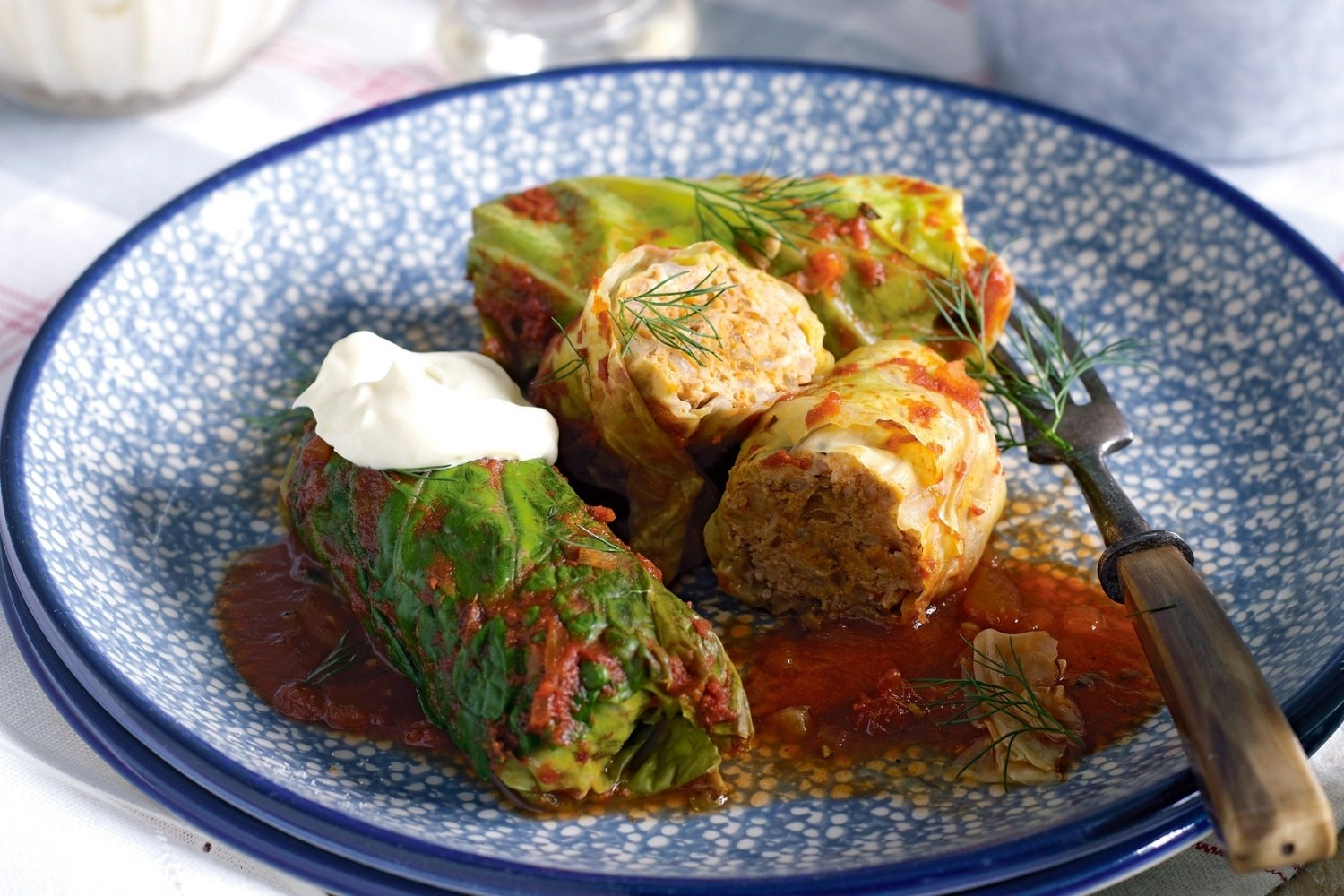
Golabki, also known as stuffed cabbage rolls, are a beloved dish in Polish cuisine. These hearty rolls, filled with a mixture of meat, rice, and spices, wrapped in tender cabbage leaves, have a rich history and cultural significance. Did you know that golabki translates to "little pigeons" in Polish? This name reflects their small, compact shape. Golabki are often served during festive occasions and family gatherings, symbolizing warmth and togetherness. Whether you're a seasoned cook or a curious foodie, learning about golabki can add a delicious twist to your culinary repertoire. Let's dive into 29 fascinating facts about this traditional dish that has captured hearts and taste buds for generations.
What is Golabki?
Golabki, also known as stuffed cabbage rolls, is a traditional Polish dish that has been enjoyed for generations. These delicious rolls are typically made with cabbage leaves stuffed with a mixture of meat, rice, and spices, then cooked in a tomato-based sauce. Let's dive into some fascinating facts about this beloved dish.
-
Golabki translates to "little pigeons" in Polish, a name that reflects the shape of the rolls.
-
This dish is a staple in Polish cuisine, often served during holidays and special occasions.
-
The origins of golabki can be traced back to the 14th century, making it a dish with a rich history.
-
Traditionally, golabki is made with ground pork, but variations include beef, veal, or even a vegetarian filling.
-
The cabbage leaves used for golabki are typically blanched to make them pliable for rolling.
-
In some regions of Poland, golabki is cooked in a broth instead of a tomato sauce.
-
A popular variation of golabki includes adding mushrooms to the filling for extra flavor.
-
Golabki is often served with a side of mashed potatoes or bread to soak up the delicious sauce.
-
This dish is not only popular in Poland but also in other Eastern European countries like Ukraine, Russia, and Hungary.
-
In the United States, golabki is sometimes referred to as "Polish cabbage rolls."
How to Make Golabki
Making golabki can be a labor of love, but the end result is well worth the effort. Here are some interesting facts about the preparation process.
-
The first step in making golabki is to core the cabbage and blanch the leaves to make them flexible.
-
The filling is typically made by mixing ground meat, cooked rice, onions, and spices.
-
Some recipes call for adding eggs to the filling mixture to help bind the ingredients together.
-
Each cabbage leaf is filled with a small amount of the meat mixture, then rolled up tightly to form a neat package.
-
The rolls are placed seam-side down in a baking dish or pot to prevent them from unraveling during cooking.
-
A tomato-based sauce, often made with tomatoes, onions, and spices, is poured over the rolls before baking or simmering.
-
Golabki can be cooked in the oven or on the stovetop, depending on personal preference.
-
Some cooks like to add a splash of vinegar or lemon juice to the sauce for a tangy flavor.
-
Leftover golabki can be stored in the refrigerator for several days and reheated for a quick and tasty meal.
-
This dish can also be frozen for longer storage, making it a convenient option for meal prep.
Variations of Golabki
While the traditional recipe is beloved by many, there are countless variations of golabki that reflect regional and personal preferences.
-
In some parts of Poland, golabki is made with buckwheat instead of rice for a heartier filling.
-
A sweet version of golabki includes raisins or dried fruit in the filling for a unique twist.
-
Vegetarian golabki can be made with a filling of mushrooms, rice, and vegetables.
-
Some recipes call for adding sauerkraut to the filling or sauce for an extra tangy flavor.
-
In Lithuania, a similar dish called "balandeliai" is made with a filling of ground meat and barley.
-
In Ukraine, golubtsi is often served with a dollop of sour cream on top.
-
Hungarian töltött káposzta is another variation, often made with a paprika-spiced filling.
-
In Jewish cuisine, holishkes are similar to golabki but are often served during Sukkot.
-
Some modern recipes experiment with different types of cabbage, such as Savoy or Napa cabbage, for a different texture and flavor.
The Final Bite
Golabki, or stuffed cabbage rolls, are more than just a tasty dish. They carry a rich history and cultural significance. From their origins in Eastern Europe to their variations across different countries, golabki have a unique place in the culinary world. Whether you prefer them with a tomato sauce, a mushroom gravy, or just plain, there's no denying their appeal.
Making golabki can be a fun and rewarding experience. It’s a chance to connect with traditions, experiment with flavors, and enjoy a hearty meal. So next time you're looking for something different to cook, why not give golabki a try? You might just find a new favorite dish.
Remember, food is not just about sustenance; it’s about sharing, enjoying, and creating memories. Golabki offer all that and more. Happy cooking!
Was this page helpful?
Our commitment to delivering trustworthy and engaging content is at the heart of what we do. Each fact on our site is contributed by real users like you, bringing a wealth of diverse insights and information. To ensure the highest standards of accuracy and reliability, our dedicated editors meticulously review each submission. This process guarantees that the facts we share are not only fascinating but also credible. Trust in our commitment to quality and authenticity as you explore and learn with us.
